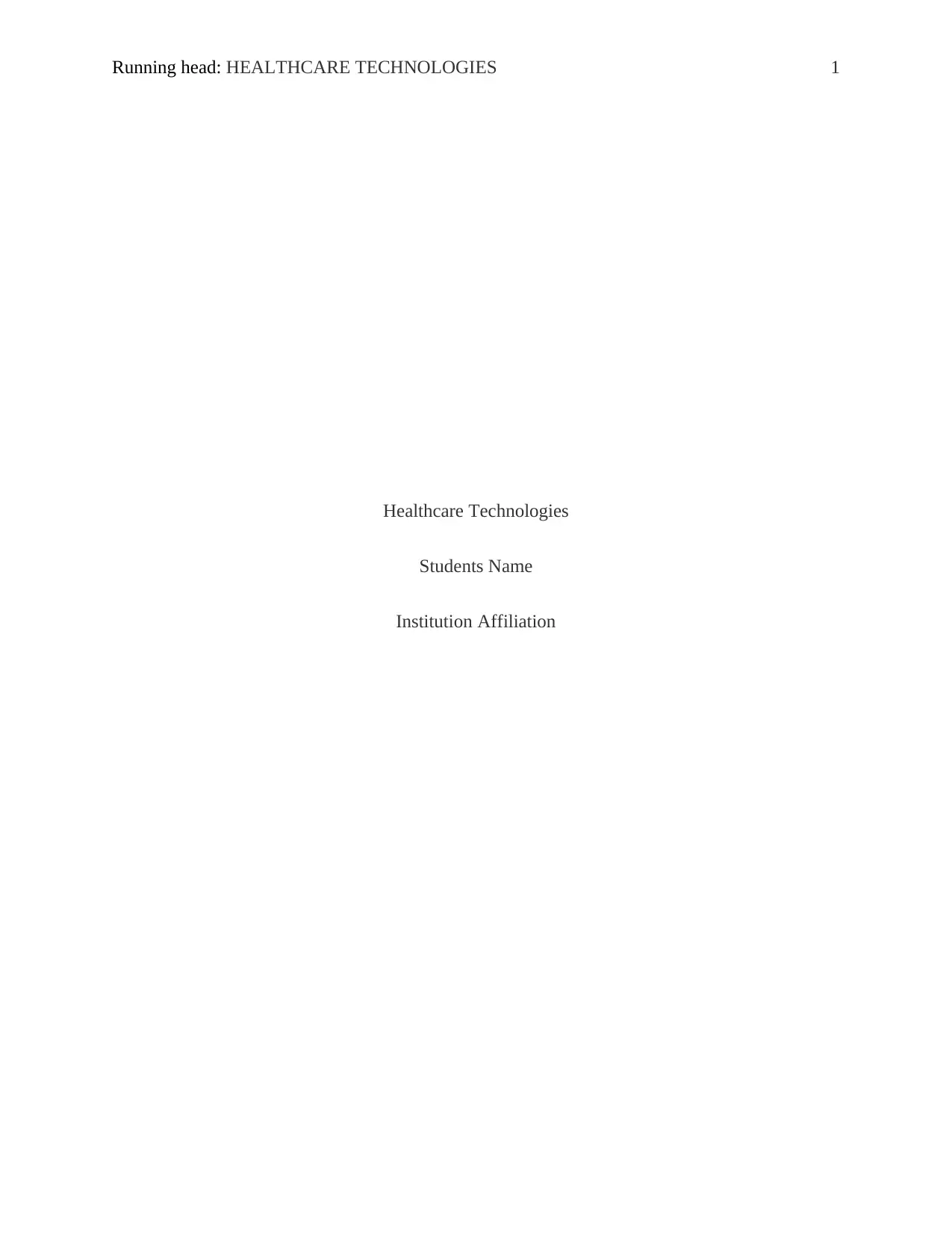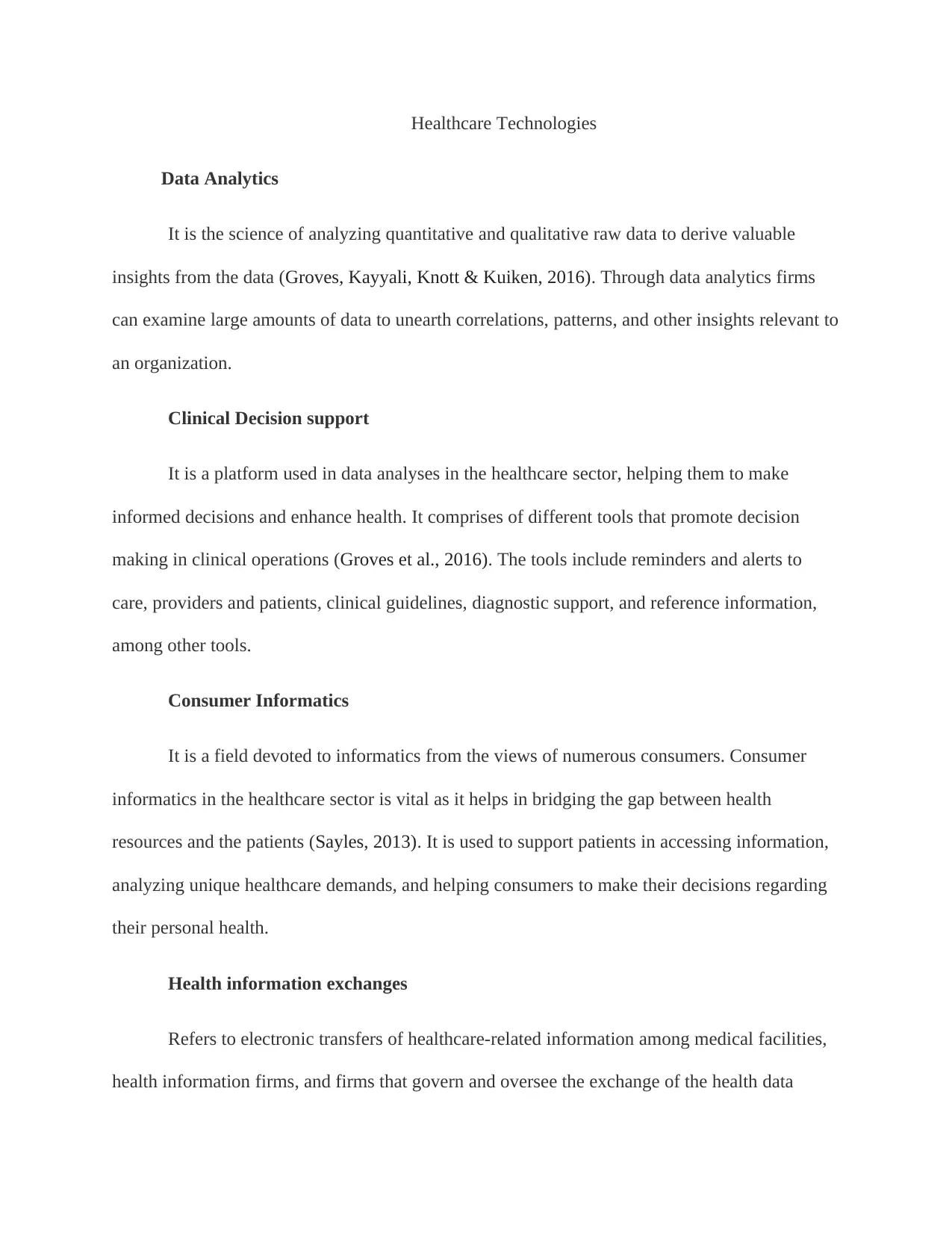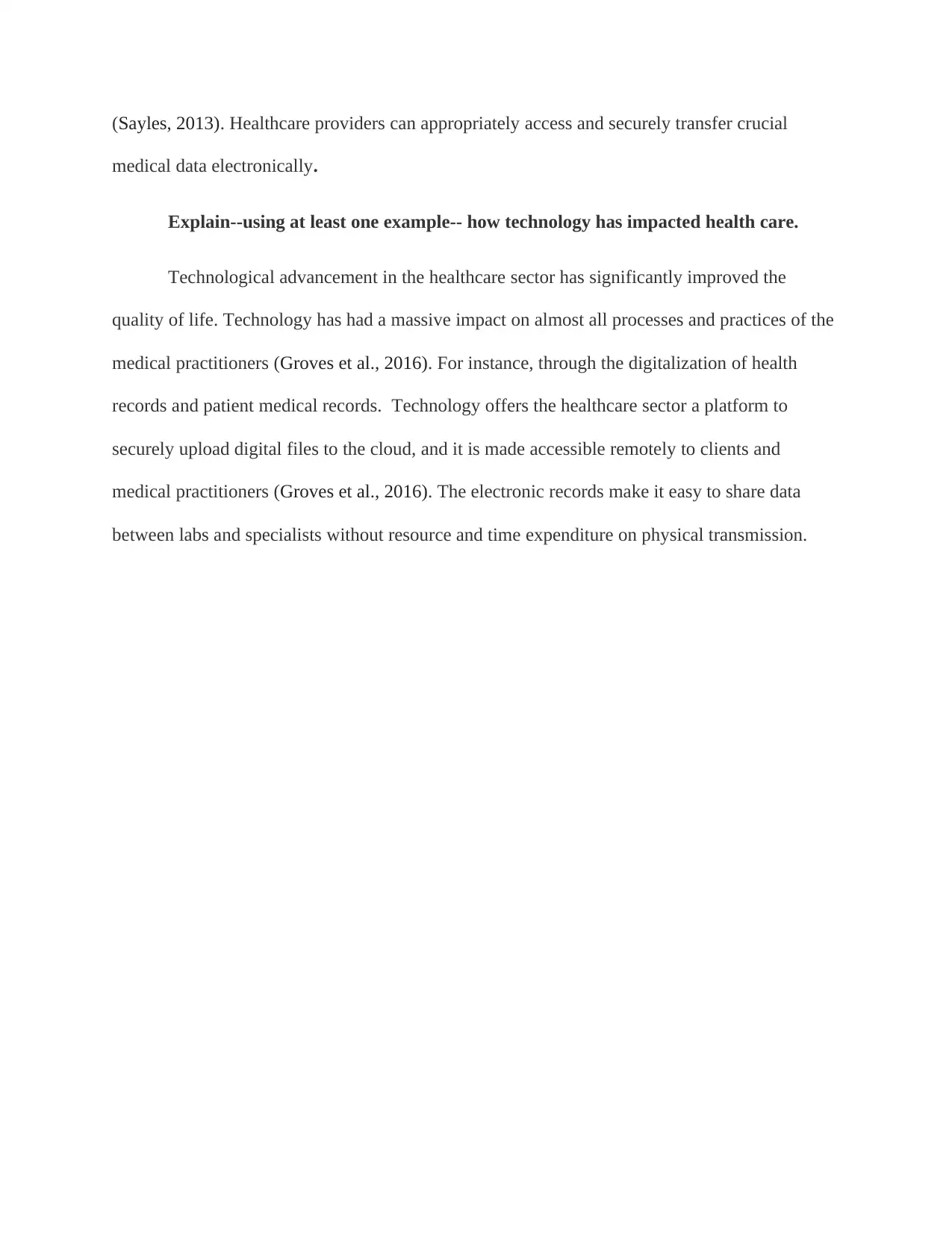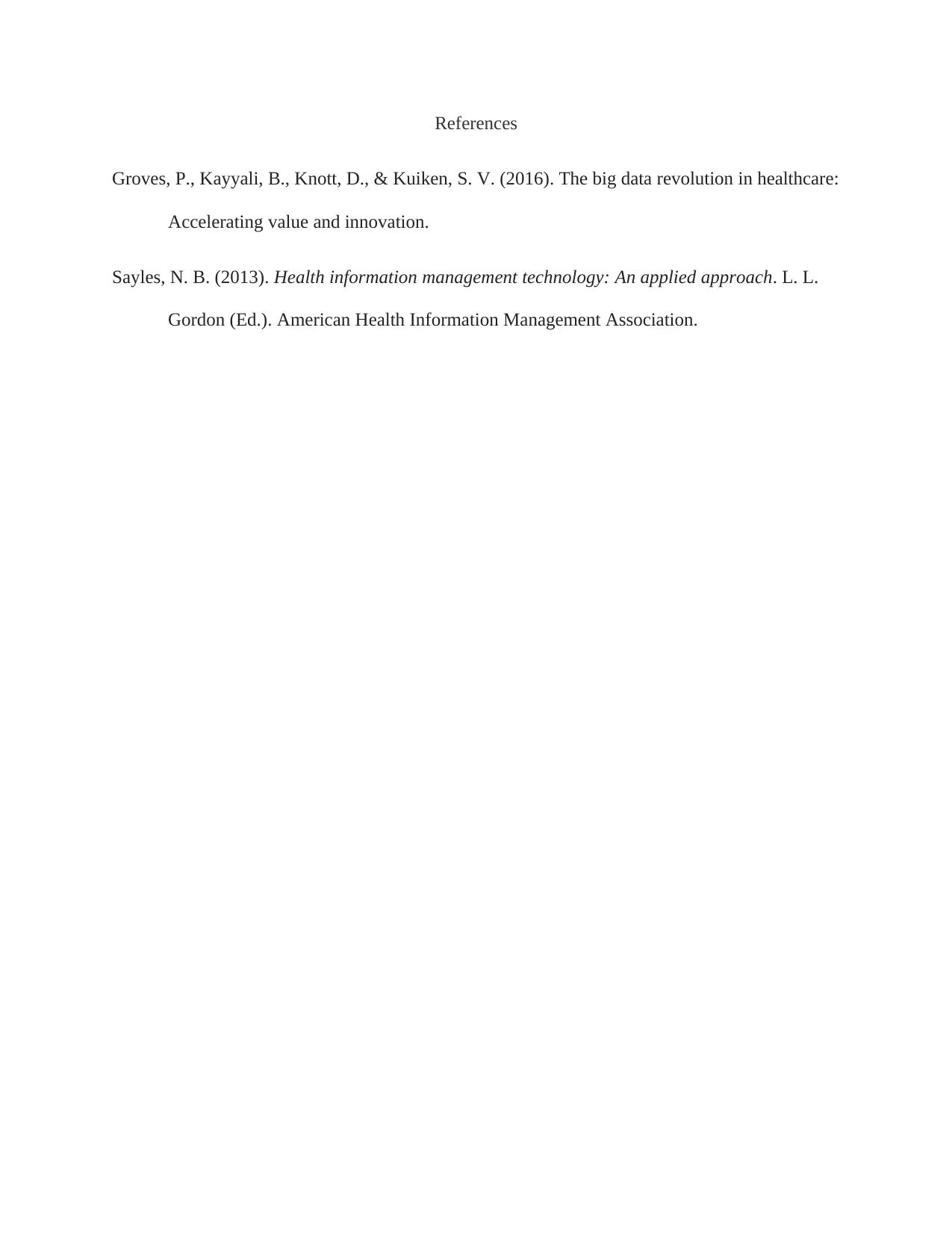Healthcare Technologies: Exploring Data Analytics and Clinical Support
VerifiedAdded on 2022/10/14
|4
|451
|11
Report
AI Summary
This report delves into the realm of healthcare technologies, examining the roles of data analytics, clinical decision support, consumer informatics, and health information exchanges. It highlights how technology, such as the digitalization of health records, has significantly enhanced the quality of life in the healthcare sector. The report explains how data analytics provides insights from quantitative and qualitative data to improve healthcare processes. It also discusses the function of clinical decision support in making informed decisions and improving clinical outcomes. Furthermore, it explores consumer informatics, which bridges the gap between health resources and patients, and health information exchanges for secure data transfer among medical facilities. The report uses examples to illustrate the impact of technology on healthcare practices and offers insights into the evolution of the sector.
1 out of 4











![[object Object]](/_next/static/media/star-bottom.7253800d.svg)